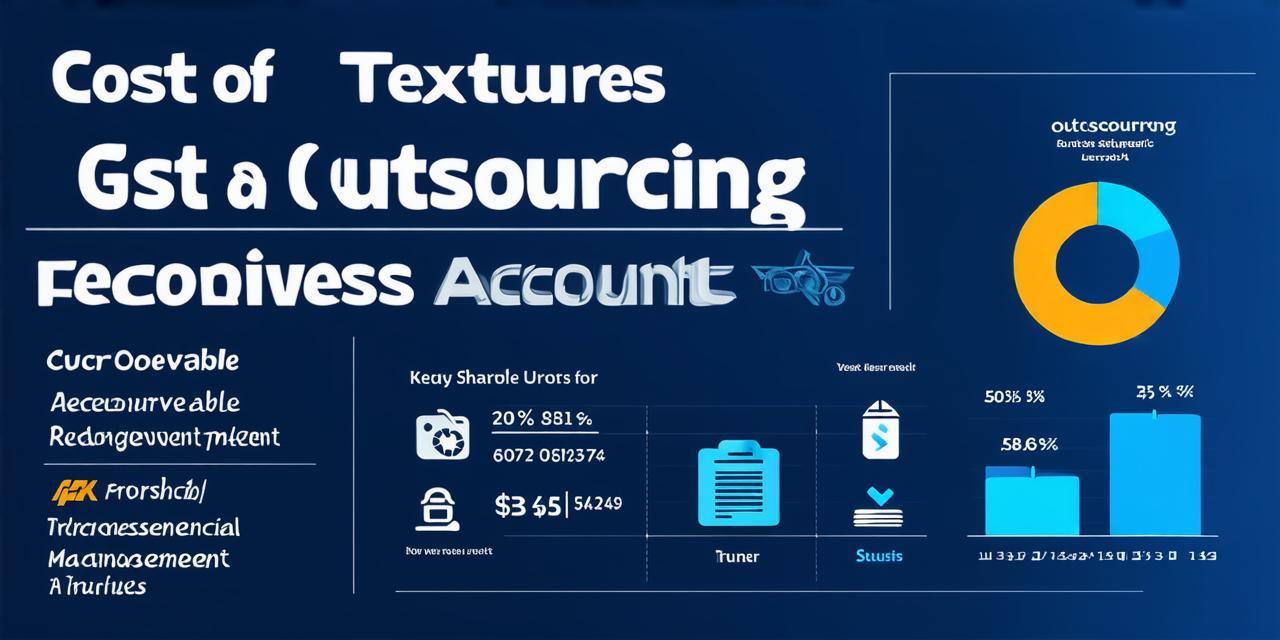The Cost of Outsourcing Accounts Receivable
Introduction:
Outsourcing accounts receivable (AR) is becoming an increasingly popular practice among businesses looking to improve efficiency and reduce costs. However, outsourcing AR can also come with a high price tag. In this article, we will explore the various costs associated with outsourcing AR and provide real-life examples of how these costs can negatively impact a business’s bottom line.
1. Upfront Costs:
The initial setup cost of outsourcing AR can be significant. This includes the cost of hiring an outsourcing provider, training the team, and implementing new systems and processes. Some businesses also face additional costs such as legal fees for contract negotiation or documentation and travel expenses for on-site visits during the implementation process.
2. Ongoing Costs:
Once AR has been outsourced, there are ongoing costs that need to be considered. These include monthly fees for the outsourcing provider’s services, as well as any additional costs such as software maintenance or hardware upgrades. Additionally, businesses may incur training expenses for their own employees to ensure they can effectively manage and monitor AR processes internally.
3. Quality Control Costs:
Quality control is critical when it comes to AR outsourcing. However, ensuring high-quality work can be costly. Businesses need to invest in robust quality control systems and processes to ensure that the work being done by the outsourcing provider meets their standards. This includes regular audits and inspections of the provider’s operations and implementing corrective action when necessary.
4. Data Privacy Costs:
With AR outsourcing, businesses need to be mindful of data privacy regulations such as GDPR and CCPA. Compliance with these regulations can be costly, including the cost of hiring legal counsel or consultants to ensure that the provider’s systems are compliant. Additionally, businesses may need to invest in new technology or software to meet these requirements.
5. Communication Costs:
Effective communication between the business and the outsourcing provider is critical to the success of AR outsourcing. However, this can be costly. Businesses need to invest in robust communication systems and processes to ensure that they are able to effectively manage and monitor AR processes with the provider. This includes regular meetings and updates on progress.

6. Loss of Control Costs:
Finally, outsourcing AR means that businesses lose some degree of control over their AR processes. While this can be beneficial in terms of efficiency and cost savings, it can also lead to negative consequences such as lost revenue or poor customer service. Businesses need to carefully consider the risks associated with outsourcing and implement appropriate measures to mitigate these risks.
Real-life Examples:
One example of the high cost of outsourcing AR is the case of XYZ Corporation. The company had been experiencing high levels of outstanding debt, which was affecting their cash flow and profitability. To address this issue, they decided to outsource their AR processes to an outsourcing provider. However, the initial setup costs were significant, including the cost of hiring the provider, training the team, and implementing new systems and processes. Additionally, there were ongoing costs associated with the provider’s services, which added to the company’s monthly expenses.
Another example is the case of ABC Inc., which had been struggling to keep up with their AR processes due to a lack of resources and expertise. To address this issue, they decided to outsource their AR processes to an outsourcing provider. However, quality control costs were a significant concern for the company, as they needed to ensure that the work being done by the provider met their high standards. As a result, they invested in robust quality control systems and processes, which added to their overall costs.
FAQs:
Q: What are the initial setup costs associated with outsourcing AR?
A: The initial setup costs can vary depending on the size of the business and the complexity of the AR processes being outsourced. These costs include hiring an outsourcing provider, training the team, implementing new systems and processes, and potentially legal fees for contract negotiation or documentation.
Q: What are the ongoing costs associated with outsourcing AR?
A: Ongoing costs include monthly fees for the outsourcing provider’s services, as well as any additional costs such as software maintenance or hardware upgrades. Businesses may also need to invest in training expenses for their own employees to ensure they can effectively manage and monitor AR processes internally.
